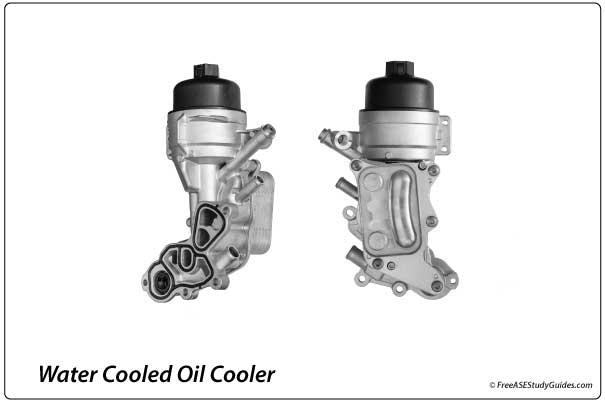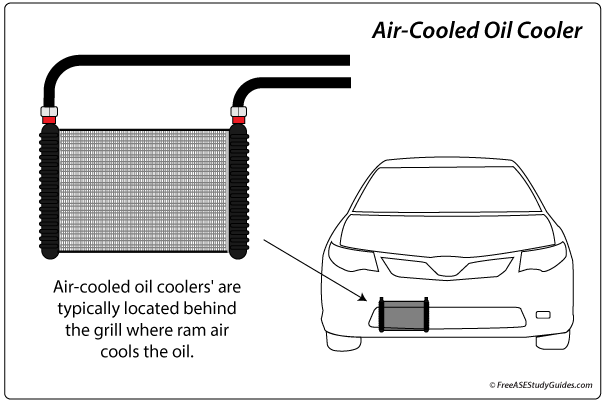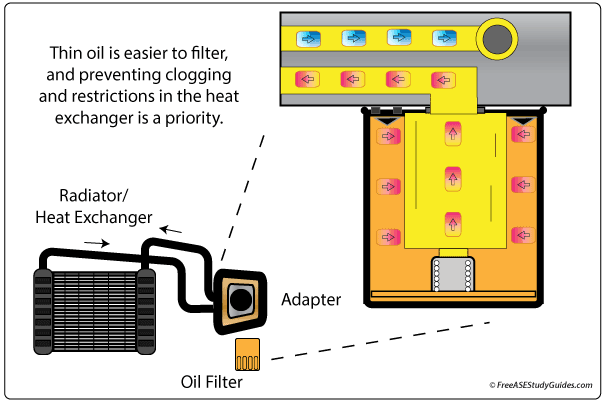Oil Temperature and Oil Coolers

The engine's oil picks up heat from the engine's moving parts. Heat affects oil's viscosity. Hot oil is thinner and flows easily through the engine, and cool oil is thicker and easily clings to the engine's moving parts. The engine's oil is multigrade and usually a balance between the two. Air and water-cooled oil coolers maintain and cool the engine's oil in high-demand situations and high-performance engines.

Most engines operate around 195° F to 220° F. When the engine is running hot, the oil is also running hot. Too much heat results in thermal breakdown. Oil breaks down at 275° F. Therefore, the engine's oil temperature should be kept within 230° F to 260° F or run a few degrees above coolant temperature. A 20° F increase can halve the engine or transmission's oil lifespan.

Oil is cooled after it leaves the oil filter. Hot thin oil is easier to filter, and preventing clogging and restrictions in the oil cooler is a priority. Air-cooled oil coolers' are typically located behind the grill and can have between 7 to 60 rows of core height. The hoses should have rounded, with no sharp angles that can restrict flow.
Oil coolers can leak coolant or oil. Inspect the gasket and oil cooler o-ring for leaks. Air-cooled heat exchangers and radiators can get clogged with debris restricting airflow.